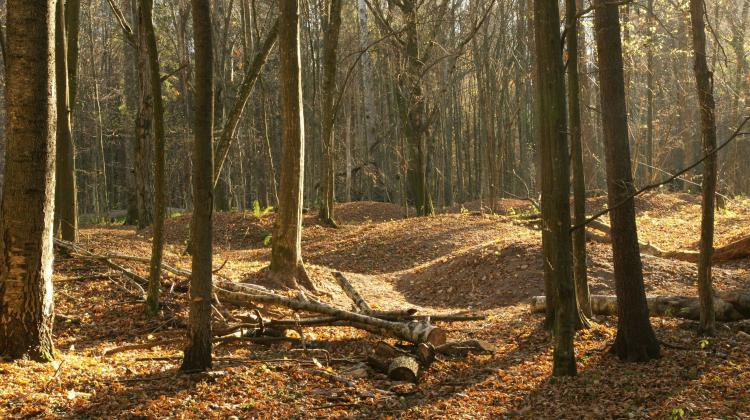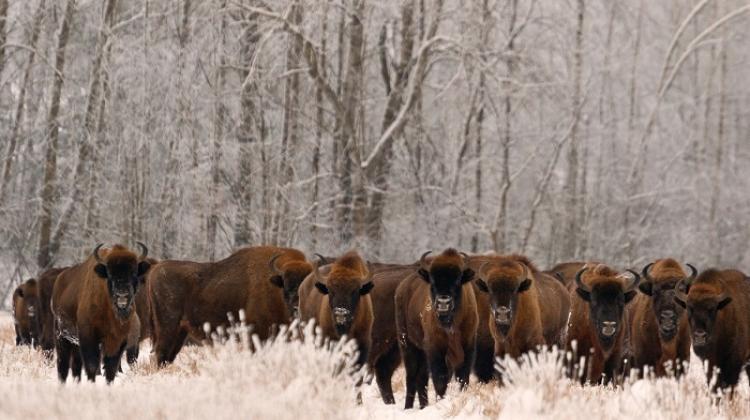Even limited forest clearance adversely affects its diversity

Even limited forest clearance has a negative impact on its biodiversity and complex relationships between groups of organisms. This has been demonstrated by studies conducted in the Białowieża Forest, published in the prestigious journal Nature Communications.
Białowieża Forest is one of Europe\'s last forests similar to a natural forest.
"About one-third of the forest is protected within the National Park and nature reserves. On the remaining two-thirds, forest management is carried out. Some trees are cut, new generation of forest planted in their place. Such management differs from natural processes - if only by the fact that wood is removed from the forest ecosystem and structures are not formed such as fallen trees or scrap trees, which many animals use as hiding or breeding places. This significantly changes the structure and functioning of the forest" - noted in an interview with PAP one of the authors of the publication, Dr. Bogdan Jaroszewicz of the Białowieża Geobotanical Station, University of Warsaw.
Cutting trees means the transformation of entire habitats. How does this affect the complex web of relationships between forest dwellers? - wondered biologists from the University of Marburg in Germany, the Institute for Nature Conservation in Kraków and the University of Warsaw Białowieża Geobotanical Station. Answers have been provided by a two-year study, in which researchers investigated the impact of clearance on the relationships of plants with pollinators and birds and mammals involved in the spread of seeds.
Lead author Joerg Albrecht from the University of Marburg notes that "many plants depend on insects to pollinate their flowers - and birds and mammals that spread the seeds in the environment". So far, most research has focused on only one type of interaction, e.g. a between plants and insects that pollinate their flowers. Scientists emphasize, however, that the same species are often involved in many different processes.
For field observations they chose ten species of plants, including hackberry, wild raspberries and currants (red and black). Their flowers and fruits are the resources essential for the functioning of a large group of species. The scientists observed thousands of interactions of these plants with almost 300 species of pollinating insects (mainly biting flies, Hymenoptera, beetles and butterflies). They also followed nearly six thousand interactions with animals that spread the seeds. They were interested in squirrels, martens, yellow-necked mice, hazel dormice, and especially birds: robins, blackcaps, hawfinches, thrushes, woodpeckers, jays, finches and other species.
It turned out that the habitat transformation by felling trees leads to a decrease in the number of species that spread seeds by 27 percent. The frequency of interactions between plants and animals of these species reduces by about half. According to the authors, this relationship changes also because the cutting of trees and timber removal causes depletion of species associated with old trees.
The pollinators’ reaction is opposite. Clearance increases the number of species by 18 percent. This may be due to their biology. Most insects are light and thermophilic, and forest clearance increases the amount of light reaching the forest floor, the researchers suggest.
Thus, the number of species that spread seeds generally decreases, but there are more pollinators. Yet despite these opposing general trends, "those plants that have lost a disproportionate amount of animal partners spreading the seeds, lose a disproportionate number of pollinating partners. Both processes have in common the decrease in density of plants with fleshy fruits in places where the forest was cut. Thus, changing the density of one species (plant) is enough to start a cascade effect for entire groups of animal species that depend on it" - explained Albrecht.
"Our discovery is an alarm for biodiversity" - noted the authors. In their view, the transformation of well-preserved natural forest ecosystems may result in the loss of many ecosystem services provided by the animals.
This complex ecosystem response to the change one element occurs because the relationships between the various inhabitants of the forest are extremely complex. "The study took into account a network of dependencies connecting three functional groups of organisms. They play three different roles in the ecosystem: pollinating insects, plants with fleshy fruits that will not bear fruit without them, as well as birds and mammals that use of these plants as food source and spread seeds" - said Dr Jaroszewicz.
All these organisms are involved in other environmental processes. For example, many species of pollinating insects (especially wasps) in the larval stage parasite on larvae of herbivorous insects. Changes in the population and species richness of Hymenoptera affect the balance of the forest ecosystem, namely the population of herbivorous insects and the scale of damage to the leaves of trees or other plants - said the biologist from the University of Warsaw.
"It should be emphasized that forest management in the Bialowieża Forest is still very limited compared to its intensity in other Polish forests. Unfortunately, even this low level of human intervention in forest ecosystems negatively affects their biodiversity and functioning" - emphasised Dr. Jaroszewicz.
PAP - Science and Scholarship in Poland, Anna Ślązak
zan/ krf/ mrt/
tr. RL
Przed dodaniem komentarza prosimy o zapoznanie z Regulaminem forum serwisu Nauka w Polsce.

















